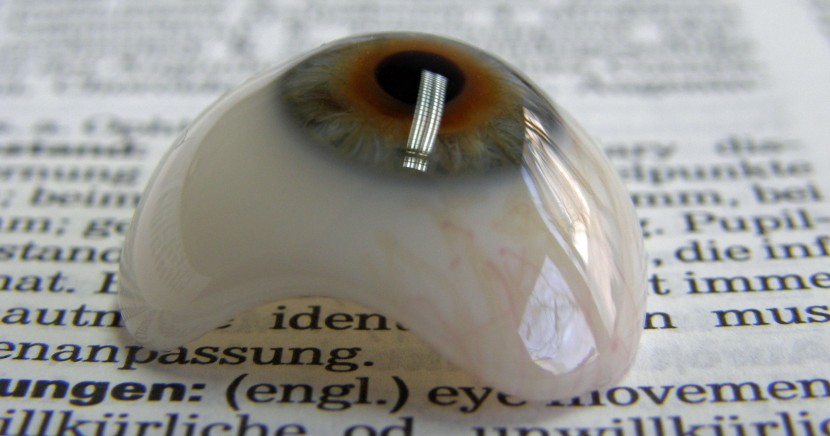
Ocular prosthesis made of glass
An ocular prosthesis is usually a bowl-shaped replacement eye, also known as an artificial eye or, in the past, as a glass eye. The glass ocular prosthesis (or glass artificial eye) is the most common form of ocular prosthesis in Germany. It is either used as a replacement for an eye removed via enucleation or, in rarer cases, as a scleral shell. Every ocular prosthesis is individually designed in shape and colour for each patient and is hand made by ocularists. The majority of artificial eyes in Germany are made of glass. In rare cases, plastic may also be used.
The material
Special high-quality glass, specifically made for artificial eyes, is used for production. The prosthesis is made of 100% glass, this means that all coloured components are not painted on, but embedded using special coloured glass. We therefore do not use any paints or other chemical additives. Allergic reactions or material-related incompatibilities are therefore not known.
A special surface
The greatest advantage of a glass ocular prosthesis is the actual surface. As the material is subjected to fire polishing during production, the surface is significantly smoother than would be the case for a mechanically polished artificial prosthesis. This protects the sensitive conjunctiva as much as possible. The material is also hydrophilic, which means that a uniform tear film can form on the surface. This results in an adequate tear flow without any feeling of dryness.
Durability
The recommended period of wear for an artificial glass eye is normally one year. It should then be replaced by an ocularist. Tear liquid not only has a high pH value to protect the human eye against damaging micro-organisms, it also has antibacterial properties. Due to these properties, it slowly degrades the molecular network of the artificial eye, causing wear and tear.
Certain environmental conditions (e.g. high level of dust at work) can significantly reduce the life of a prosthesis.
Production
An experienced ocularist needs between one and two hours to create a glass ocular prosthesis. If a suitable artificial eye is already available, it can be used as a working template. If the eye is being made for the first time, more information can be found here in the section Treatment.


